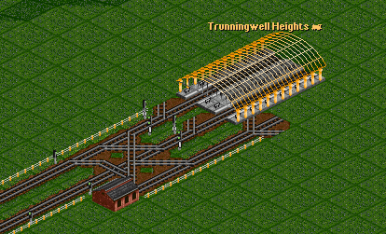Difference between revisions of "Overflow"
From #openttdcoop wiki
m (Added to station category and merge proposal) |
m (Added image) |
||
| Line 1: | Line 1: | ||
| − | |||
{{stub}} | {{stub}} | ||
| + | [[Image:Overflow example.png|right|thumb|386px|An example showing the simplest and most commonly used overflow]] | ||
Overflows are a sometimes-handy feature of our networks. When they are used, they can save us a lot of work. On the other hand they have (of course) their disadvantages. | Overflows are a sometimes-handy feature of our networks. When they are used, they can save us a lot of work. On the other hand they have (of course) their disadvantages. | ||
| Line 21: | Line 21: | ||
[[Category:Stations]] | [[Category:Stations]] | ||
| + | [[Category:Basic networking]] | ||
Revision as of 09:27, 4 December 2013
This article is a stub. Please, if you can, expand it.
Overflows are a sometimes-handy feature of our networks. When they are used, they can save us a lot of work. On the other hand they have (of course) their disadvantages.
Purpose
Why do we build an overflow – our station tends to catch wave traffic and sometimes it just jams. The primal source of this are usually just jams on the network, making trains come in random intervals, randomizing also their required count to take all the cargo. So the first reaction on jammed station shouldn’t be to add an overflow, but unjam the network first. In some cases it is possible that the station gets trains just randomly even when our network isn’t jamming at all. The perfect examples are basically any conditional orders, where trains could jump to other orders, skipping/adding part of their journey, reaching random travel times.
Disadvantages
Overflows need space and sometimes additional logic. If they are built without a reverser, their depot is visible, which can ruin refit or train replacement games, and lead to problems in other games.
